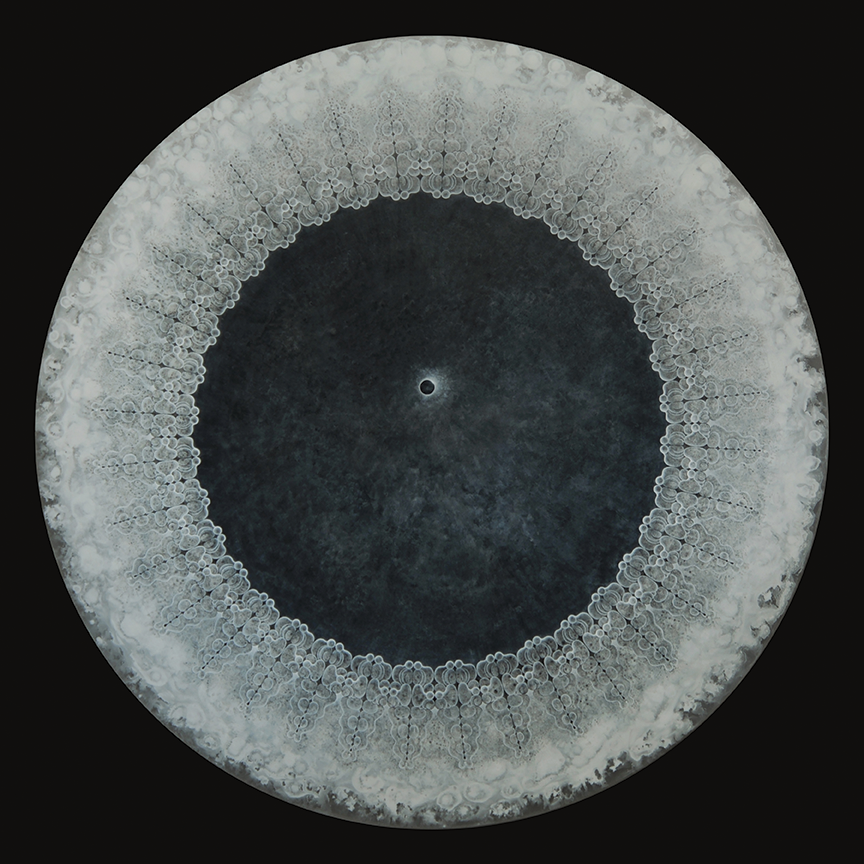Carol Prusa: Dark Energy

How do we know what we know? How do we know what we don’t know? Artist Carol Prusa, whose solo exhibition Carol Prusa: Dark Energy is now on view at the Heftler Visiting Artist Gallery at Endicott College, invites us to ponder these and other deep questions, taking us to realms both real and interpreted. Prusa’s work marries science, math and art in a manner that is both provocative and gorgeous.
Known for her large-scale silverpoint drawings, some of which call to mind the work of Vija Celmins, Prusa’s recent work employs silverpoint and black and white pigments on a multi-dimensional variety of surfaces including fiberglass forms and acrylic circles, all in greyscale—a method that allows her to explore the endless possibilities of figurative and geometric line and form on an almost microscopic scale, but that probes the largest interpretations of life and matter. We are, after all, a mere blip on the cosmic frontier.
The exhibition setup gives one the sense of a planetarium: Pedestals hold shimmering spheres aloft, and both two- and three-dimensional works line gallery walls. Step back and some pieces appear fringed with lace. Step closer and you might imagine the films from a mammogram, the milky white spaces crisscrossed by tendrils of life-giving tissue. Looking at the work in its totality, variations on just such themes easily emerge: fertility and consciousness; the birth and breath of the universe.
An entire wall is devoted to Prusa’s more recent work, marking a return to flat surfaces, inspired by last summer’s eclipse—an event she says literally knocked her off her feet at the moment the sun became a light-fringed black disc. In the show’s title piece, Dark Energy (silverpoint, graphite, titanium white, mars black pigment with acrylic binder on wood panel), curved embryonic forms bow, curl and nestle into one another—the Madonna and child, a nautilus, a tonsil or a cochlea; so many possibilities. And that is the definition of dark matter. “Most of the universe is made up of this thing that we can’t see,” Prusa says. “It’s everywhere. It’s a state of pure possibility.”
